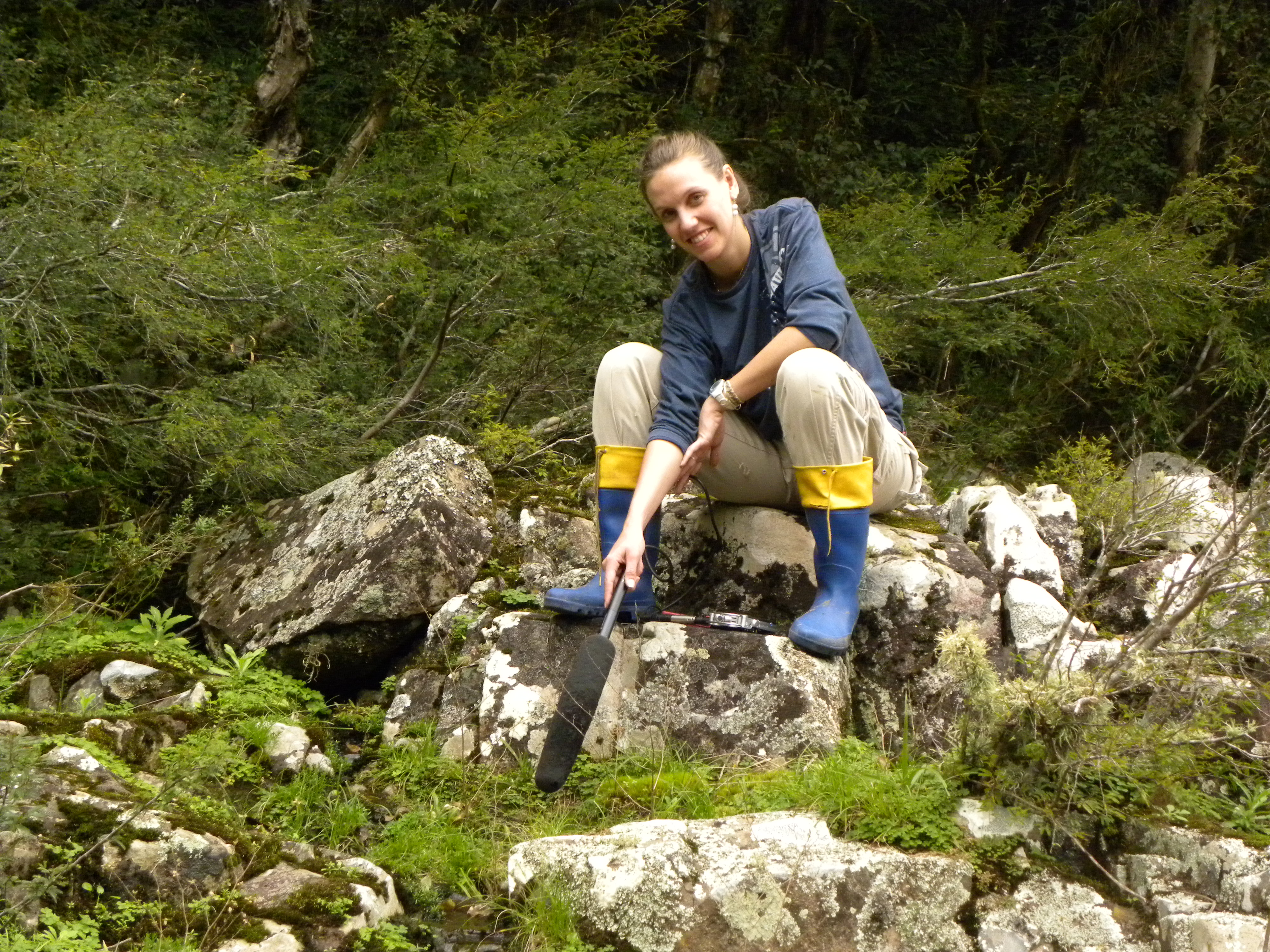The Future Leaders of Amphibian Conservation program is an award to a number of early-career conservationists from around the world that have been identified by the Amphibian Survival Alliance as the next generation of am-phibian conservationists. So far we have awarded 19 Future Leaders from 12 countries (Bolivia, Brazil, Peru, Mexico, Ghana, South Africa, Uganda, India, Nepal, Pakistan, Australia and United States). You can learn more about some of the Future Leaders of Amphibian Conservation here.
1) Can you tell us a little bit about you, Michelle?
I am a Brazilian researcher and amphibian conservationist. Since 2010, I am an active member of the Admirabilis Project, which aims to study and protect the Admirable Red-Belly Toad (ARBT, Melanophryniscus admirabilis). This is one of the most successful amphibian conservation programmes in Brazil. Because of my work on this project, I was invited to join ASA partner Instituto Curicaca, where I am a Project Coordinator at the Amphibian and Reptile Conservation Centre. Currently, I am finishing my PhD on the species at the Federal University of Rio Grande do Sul. From August 2020 on, I will start working at the National Centre for Conservation and Research on Reptiles and Amphibians (RAN) of the Chico Mendes Institute for Biodiversity Conservation (ICMBio), the governmental institution responsible for the conservation of threatened species in Brazil. I will be responsible for planning, organizing and reviewing the Brazilian Herpetofauna Conservation Action Plans.
2) What projects have you been involved in to promote amphibian conservation?
Undoubtedly, the Admirabilis Project is the most important amphibian conservation project I have been involved. The ARBT is a microendemic toad from the southern Brazilian Atlantic Forest. In 2010, we started this project motivated by concerns about a plan to construct a small hydroelectric power plant just 500 meters upstream of the species’ breeding site. Because of our work, the ARBT was evaluated as Critically Endangered at regional, national and global levels. Fortunately, through a multi-institutional effort, we managed to revert the government authorization to build the plant, and the given license was cancelled. It was the first time in Brazilian history that an amphibian prevented the construction of a big enterprise. This project also aims to create a protected area in the locality and to minimize threats such as deforestation and pesticide use in the region. To achieve that, we at Instituto Curicaca got a grant from the Amphibian Survival Alliance to rescue the production of the native Yerba-Mate in agroforestry systems as an alternative to the monoculture of tobacco and soybean. I believe this change in local production will benefit both local people and the entire population of the Toad.
3) What is your favourite amphibian species and why?
It’s hard to say, because there are so many amphibian species in the world, and all of them are fascinating! But, yes, I have a favourite species, and not oddly enough, it is the ARBT! Besides being beautiful and exclusive from a single place in the world, I think it is my favourite species because it still amazes me with its incredible behaviours and evolutionary life history, even though I have been working with it for so many years. Moreover, the species has already provided me many incredible and memorable moments. I have met most of my best friends during these field trips!
4) Has been recognized as a Future Leader of Amphibian Conservation by ASA made a difference in your career so far?
Absolutely! I think that, most of the time, the recognition for biodiversity conservation work does not come through scientific publications. Being awarded as a Future Leader by the Amphibian Survival Alliance, besides helping to make conservation grants possible, has also been an important motivator for me to continue developing my work in conservation. It was a great incentive for me not to give up! Also, I am sure that this recognition was important for my curriculum and helped me to get this fellowship to work at the ICMBio.

